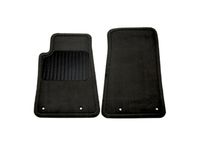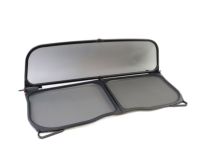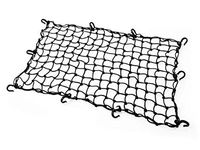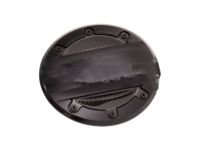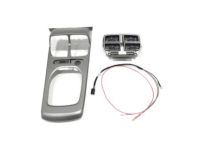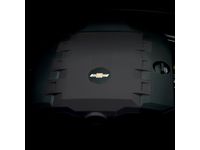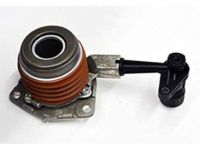Why choose GMPartsGiant
- Large Inventory
The excellent site to buy genuine parts for years has been GMPartsGiant.com. We're the optimal online parts and accessory store for your Chevrolet Camaro. GMPartsGiant.com offers a large parts and accessory inventory to cover all your vehicle's repairs. Feel free to browse through our genuine Chevrolet Camaro parts and accessory catalog to find all your vehicle's needs.
- Fast Shipping Times
All of our Chevrolet Camaro parts and accessories are expedited directly from verified dealers and backed by the manufacturer's warranty. Our experienced team ensures the orders are packed to provide quick transit times. The majority of the orders are shipped out within a couple of business days to get the parts out to you as fast as possible.
- Low Prices
Our low prices say it all. You can rest assured that you will always receive unbeatable prices on OEM Chevrolet Camaro parts. Our giant inventory is beyond compare and has everything you need at an extraordinary value not found anywhere else. Whether you're restoring an old vehicle or upgrading the performance of your Chevrolet Camaro, you can count on the quality of our products without hurting your bank account.
Popular Genuine Chevrolet Camaro Parts
- Engine Parts View More >
- Front Suspension, Steering Parts View More >
- Fuel System, Exhaust, Emission System Parts View More >
- Brakes Parts View More >
- Transmission - Automatic Parts View More >
- Frames, Springs, Shocks, Bumpers Parts View More >
- Cooling System, Grille, Oil System Parts View More >
- Front End Sheet Metal, Heater Parts View More >
Shop Genuine Chevrolet Camaro Parts with GMPartsGiant.com
The Chevrolet Camaro is a mid-size sedan produced from 1967 to 2002 and then continued from 2010 to the present. The Camaro parts are powered by a V6 or V8 engine; the turbocharged 2.0-liter four-cylinder produced 275 horsepower and 295 pound-feet of torque, the 3.6-liter V6 engine produced 335 horsepower and 284 pound-feet of torque, the 6.2-liter V8 produced 455 horsepower and 455 pound-feet of torque, and the supercharged 6.2-liter V8 with 650 horsepower and 650 pound-feet of torque. The Chevrolet Camaro is rear-wheel drive and uses a standard six-speed manual transmission, eight-speed automatic transmission, and 10-speed automatic. The sedan could rip from zero to 60 mph in just 5.5 seconds. The Camaro with Turbo-four, manual transmission consumes 19 mpg in the city, and Turbo-four, automatic devices consume 22 mpg in the city. The Supercharged V8, manual transmission consumes 14 mpg in the city, and the automatic transmission consumes 13 mpg in the city. The Camaro is 188.3 inches/ 4784mm in length, 74.7 inches/ 1897mm in width, and 53.1 inches/ 1348mm in height. The wheelbase is 110.7 inches/ 2811mm. The sedan provides a comfortable feel, well-shaped front seat-backs offer good lateral support, the iconic door, center armrests, infotainment system's quick reactions, and modern aesthetic. The sedan is popular for its potent engines and responsive transmissions.
Despite the high regard for the Chevrolet Camaro, owners have reported some common issues. The most frequent concern relates to engine problems, such as overheating, misfiring, and coolant leakage. These issues often result in decreased power during acceleration and poor fuel economy. Experienced owners often link these problems to a faulty intake manifold gasket, but a professional inspection might reveal issues with the fuel pump or spark plug as well. Another problem that has been reported involves noises from the cylinder head, often described as ticking or clanking, along with dirty oil and increased oil consumption. These could be caused by a damaged rocker arm or rod bearing, with the fuel pump and spark plug also potentially contributing to increased oil consumption. It's essential not to overlook the regular replacement of parts that wear out easily, such as windshield wipers, wiper blades, and seat belts, even before they completely fail, to ensure the car's continued performance and safety.
For Chevrolet owners with dreams of keeping their vehicles running in prime condition, choosing OEM parts is a smart decision. Meticulously crafted, these parts follow strict factory specifications and are manufactured in top-notch facilities with advanced technologies. Furthermore, they undergo rigorous testing to ensure durability and safety, making them a reliable choice for Chevrolet owners. Looking for affordable OEM Chevrolet Camaro parts, including Body Moldings, Sheet Metal, Rear Compartment Hardware, Roof Hardware, Transmission - Manual? Explore our comprehensive catalogue of genuine Chevrolet Camaro parts, like Folding Top, Interior Trim, Front Seat Trim, Seat Belts, Interior Trim, Front Seat Trim, Seat Belts. All our parts, like Rear Glass, Seat Parts, Adjuster are covered by the manufacturer's warranty. Plus, our straightforward return policy and speedy delivery service ensure an unparalleled shopping experience. We look forward to your visit!
Chevrolet Camaro Parts Questions & Answers
- Q: How do I replace the parking brake shoes on Chevrolet Camaro?A: To replace the parking brake shoes on a vehicle, start by loosening the wheel lug nuts and raising the rear of the vehicle on jack stands. Release the parking brake and remove the wheel and the screw that secures the disc/drum to the hub. Take off the disc and check the drum portion for any cracks, score marks, deep scratches, or hard spots.
- Q: How do you remove the Clutch Slave Cylinder on Chevrolet Camaro?A: At the start of taking out the transmission, remove the quick-disconnect line bolt on the clutch slave cylinder for Aisin transmission models. On Tremec ones, undo the fitting at the tip of clutch line and withdraw it from clutch slave cylinder, blocking its end to prevent contamination. Remove clutch slave cylinder mounting bolts as well as clutch slave cylinder assembly if equipped with o-ring. To put back in place, start by putting new o-ring behind Aisin model's clutch slave cylinder. Tighten up the clutch slave cylinder into position until you hear a click for Aisin models. For Tremec types, cautiously screw in the clutch line fitting into the clutch slave cylinder with no thread damage. Install and tighten down bolts on clutch slave cylinders as per specified torque value. The bolt used to connect quick-disconnect of Aisin models' clutches shall be installed and torqued accordingly. Lastly, install transmission; check brake fluid level in reservoir while adding any necessary fluid; bleed system and again verify brake fluid in reservoir before starting engine.
- Q: How do you remove the driveaxle oil seal on Chevrolet Camaro?A: To remove the wheel seal, start by raising the rear of the vehicle and supporting it securely on jackstands. Place the transmission in Neutral with the parking brake off and block the front wheels to prevent the vehicle from rolling. Next, remove the driveaxle(s) and carefully pry out the wheel seal using a seal removal tool or a large screwdriver, being careful not to damage or scratch the seal bore. To install the new seal, use a seal installer or a large deep socket as a drift and drive it into the bore squarely, ensuring it is completely seated. Lubricate the lip of the new seal with multi-purpose grease and then install the rear driveaxle(s), being careful not to damage the lip of the new seal. Finally, check the differential lubricant level and add some, if necessary, to bring it to the appropriate level.
- Q: How do you remove the outer CV joint boot on Chevrolet Camaro?A: To remove the outer CV boot, start by removing the CV boot and mounting it in a vise lined with wood or rags to prevent damage. Cut off the boot clamps and pull the boot off the CV joint. Use a hammer and brass punch to drive the CV joint off the shaft. Then, use snap-ring pliers to spread open the retaining ring and remove it from the shaft. Slide the CV boot off the axleshaft. Next, for joint disassembly, inspection, and reassembly, use diagonal cutters to cut off the boot clamps. Knock the inner race down to remove a ball bearing, and pry the balls out of the cage one at a time. Tilt the inner race and cage 90 degrees, align the windows in the cage with the lands of the housing, and rotate the inner race and cage out of the housing. Clean the components with solvent and check for any damage or wear.



















































